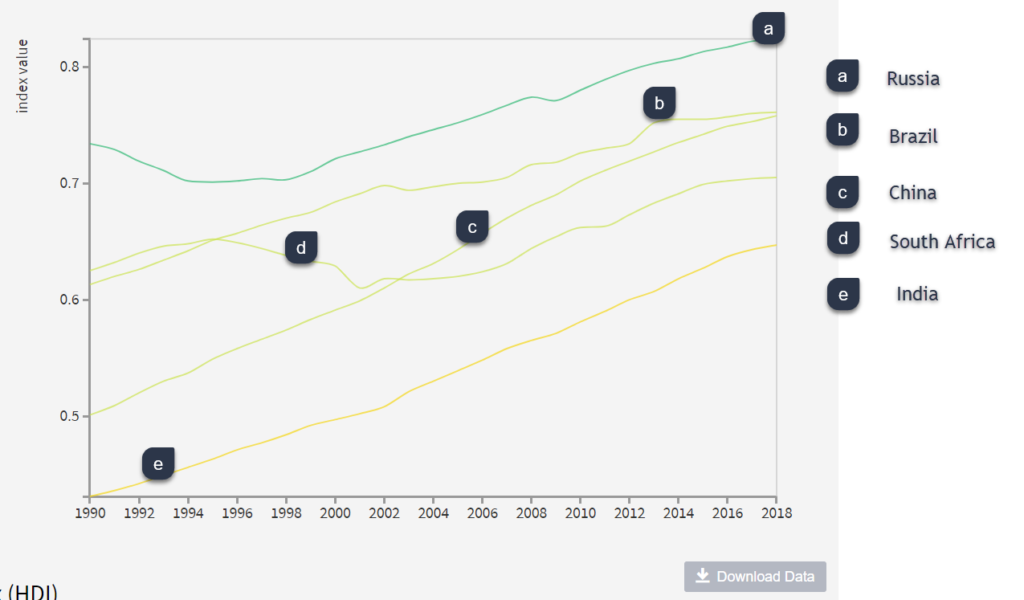Recent discussions in the media has focussed on whether South Africa belongs in the exclusive BRICS (Brazil, Russia, India, China and South Africa) group of countries. Over the last year I have increasingly been looking to Brazil and India as examples of what might be possible. The improvements in the Human Development Index (HDI) of these countries suggests we can learn a great deal from them. Of course, in Brazil and India there are disputes on the numbers, however the take home is this – South Africa’s HDI has fallen primarily due to poor health outcomes, which are associated with the impact of HIV/Aids. Our educational performance has also been weak. The silver lining is that current initiatives by government in the health and education sectors have better prospects for success, than our first policy choices after 1994.
The table below has been updated with data till 2018.
Human Development Index – Brazil, South Africa, China, Russia and India

The chart shows the Human Development Index (HDI) for the BRICS countries (i.e. Brazil, Russia, India and South Africa) from 1980 to 2018. The data shows that Russia, India and Brazil have improved their HDI, whilst South Africa has seen a decline in its HDI since the mid-1990s. It underscores the point, that we must be learning more from the experiences in Russia, but especially from Brazil and India.
At first glance South Africa’s performance looks exceptionally weak. To better understand the outcomes, it is important to look at the components that make up the HDI.
This page may take a few seconds to load as it extracts the charts from Public Data Explorer
The HDI is a composite index measuring average achievement in three basic dimensions of human development—
- a long and healthy life,
- knowledge
- and a decent standard of living.
Let us look at each in turn.
A Long and Healthy Life
The measurement used is longevity. Formally, it is defined as follows: “Life expectancy at birth expressed as an index using a minimum value of 20 years and observed maximum value over 1980-2010”.
Knowledge
The measure used in the HDI to measure knowledge is based on mean years of schooling (of adults) and expected years of schooling (of children). Importantly, the measure is not one quality, but rather years of schooling. The trend is shown in the chart below.
Income
The measure utlised in basically per capita income equalised for purchasing power. The formal definition of this measure is:
GNI per capita (2005 PPP International $, using natural logarithm) expressed as an index using a minimum value of $100 and observed maximum value over 1980-2011